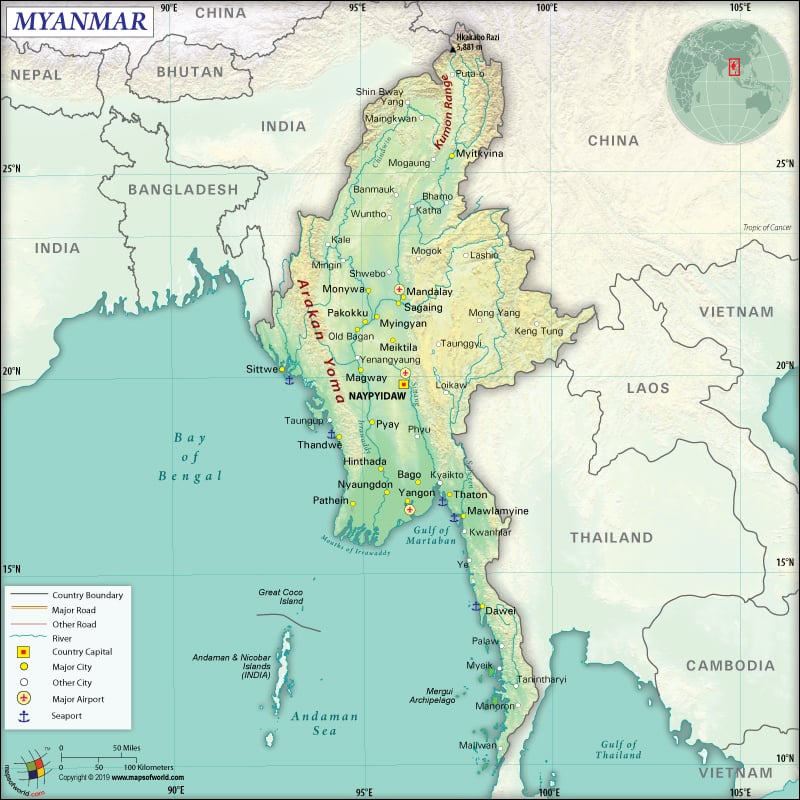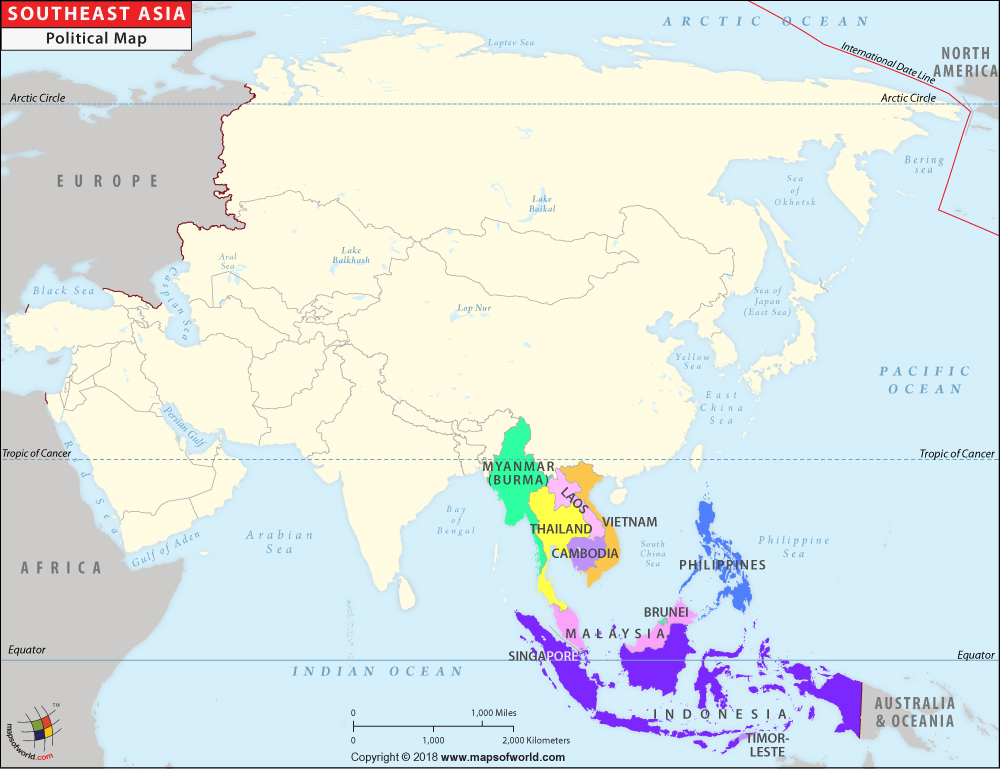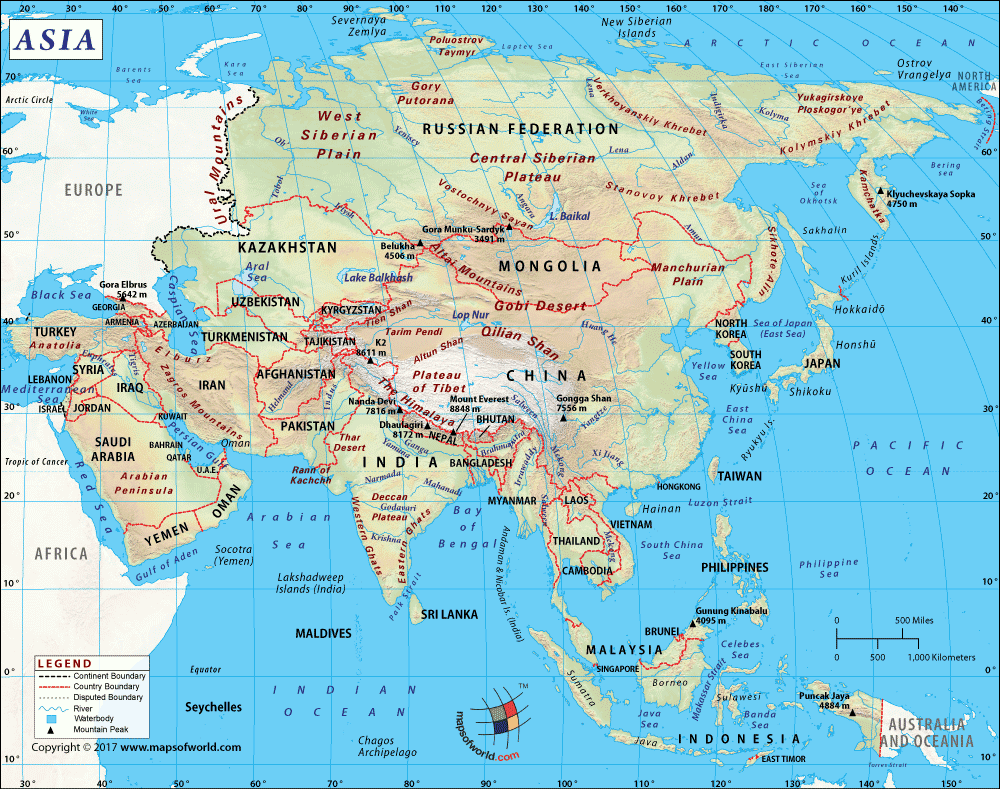What are the Key Facts of Myanmar?

|
Official Name |
Republic of the Union of Myanmar |
|
Continent |
Asia |
|
Capital |
Naypyidaw |
|
Largest City |
Yangon |
|
Coordinates |
22.000000, 98.000000 |
|
Area |
261,228 sq. mi (676,578 sq. km) |
|
Land Boundaries |
4,053 mi (6,522 km) |
|
Coastline |
1,199 mi (1,930 km) |
|
Currency |
Kyat (K) (MMK) |
|
Neighboring Countries |
China, India, Bangladesh, Laos, Thailand |
|
Population |
53,582,855 (2017 census) |
|
Official Languages |
Burmese |
|
Major Religion |
Buddhism |
|
National Day |
4 January (Independence Day) |
|
National Anthem |
“Kaba Ma Kyei” |
|
Form of Government |
Unitary parliamentary constitutional republic |
|
President |
Win Myint |
|
State Counsellor |
Aung San Suu Kyi |
|
GDP per capita (PPP) |
$ 6,662.3 (World Bank, 2018) |
|
GDP per capita (nominal) |
$ 1,326.0 (World Bank, 2018) |
|
HDI |
0.584 (2018), Rank: 145 |
|
Literacy Rate (%) |
75.55 (UNESCO, 2016) |
|
Space Agency |
NA |
|
Military Expenditure Ranking |
50 (SIPRI, 2017) |
|
No. of Olympic Medals |
0 (as of 2018) |
|
Driving Side |
right |
|
Calling Code |
+95 |
|
Time Zone |
UTC+06:30 (MMT) |
|
Internet TLD |
.mm |
Where is Myanmar?
Myanmar (also known as Burma) is a Southeast Asian country that is located between Thailand (East & South) and Bangladesh (West). It has India on its North West and China on its North East and borders the Bay of Bengal (to the south) and the Andaman Sea (to the south). Check out this – Myanmar Map and Other 8 Related Burmese Maps for more maps and info about Myanmar.
What is the Geography of Myanmar?
Myanmar has a total area of 676,578 sq. km (261,228 sq. mi), out of which 653,508 sq. km (252,321 sq. mi) is land area and 23,070 sq. km (8,907 sq. mi) is water area.
It has a 6,522 km (4,053 mi) long land boundary, which is shared with: Thailand (2,416 km or 1,501 mi) to the southeast, China (2,129 km or 1,323 mi) to the northeast, India (1,468 km or 912 mi) to the northwest, Bangladesh (271 km or 168 mi) to the northwest, and Laos (238 km or 148 mi) to the east. The country has a 1,930 km (1,199 mi) long coastline.
The lowlands are situated in the center of Burma. Steep and rugged highlands ring these lowlands. The mean elevation of Myanmar is 702 m (2,303 ft). While Gamlang Razi at 5,870 m (19,259 ft) is the highest elevation point of the country, the Andaman Sea or Bay of Bengal at 0 m (0 ft) is the lowest elevation point.
The highlands bind the low floodplain central Burma. The broad Irrawaddy Delta is located along the Andaman Sea and to the southwest of Yangon. Northern Burma is located in the front of the Himalayas’ southeastern fringe. To the east, the Shan Plateau rises. The Chin Hills and other associated landforms break Burma’s western border with India. The coastal plain, bordering Thailand, in the far southern strip of Myanmar swells to the Malay Peninsula as well as the rainforest hills.
The significant mountains in Burma are Hkakabo Razi, Gamlang Razi, Dindaw Razi and Tami Razi. The longest rivers of Myanmar are Mekong, Salween, Chindwin and Irrawaddy.
What is the Climate of Myanmar?
As Myanmar is located between the Tropic of Cancer and the Equator, it is situated in Asia’s monsoon region. The coastal belts in the country receive more than 5,000 mm (196.9 in) of rain every year. In the delta region, the yearly rainfall amount is around 2,500 mm (98.4 in).
The central part of the country (consisting of lowlands) is a dry zone, where the annual rainfall level is less than 1,000 mm (39.4 in). While the coastal and delta belts get the highest temperature, the northern regions get the lowest temperature.
The average maximum temperature in the country is 32 °C (89.6 °F), found mainly in the delta and coastal areas. Myanmar’s northern regions get the lowest temperature, and the average temperature is 21 °C (70 °F).
What is the Economy of Myanmar?
Myanmar had a nominal GDP of US$71.215 billion in 2018, and the annual GDP growth rate was 6.2%. The country had a US$6.14 billion negative trade balance in 2017. Its export was US$15 billion, and import was US$21.2 billion.
The principal exports were petroleum gas, refined copper, rice, non-knit women’s coats, dried legumes, etc. The items mainly imported by Burma were refined petroleum, motorcycles, delivery trucks, raw sugar, and broadcasting equipment.
The country had an unemployment rate of 1.56% in 2018, an increase of 0.79% since 2015. The rate of poverty in Myanmar was 32.1% in 2015. Poverty in rural areas is worse than urban ones. The Poverty Report, prepared by the Central Statistical Organization (using Myanmar Living Conditions Survey 2017), shows that the poverty rate was 24.8%.
What is the Transportation System of Myanmar?
Myanmar has 157,000 km (97,555 mi) long roadways, out of which 34,700 km (21,562 mi) is paved and 122,300 km (75,994 mi) is unpaved. Some of the major highways are NR1 and NR2 (Yangon to Mandalay), NR3 (Mandalay to Muse), NR4 (Meiktila to Tachileik), NR5 (Taungoo to Hopong), NR31 (Mandalay to Myitkyina), etc. Yangon-Mandalay Expressway is an important lifeline of the country, having a double carriageway as well as four lanes throughout the stretch.
The country has a 5,031 km (3,126 mi) long railway network, and all of them are 1.000-m gauge railway tracks. The waterway is spread across 12,800 km (7,954 mi) throughout the country. Most of the navigation takes place on the Ayeyarwady River. Ninety-five merchant marine ships are there in Myanmar, out of which 41 are general cargo, five oil tankers, one bulk carrier, and 48 other vessels. The major seaports are Mawlamyine (in Moulmein) and Sittwe. There is a single major river port in Myanmar, and it is Rangoon (in Yangon) on Rangoon River.
There are 64 airports in Burma, out of which 36 have paved runways, and 28 have unpaved runways. Eleven heliports are also there. The major international airports in the country are Mandalay International Airport (in Tada-U, around 35 km south of Mandalay), Yangon International Airport (in Yangon), Nay Pyi Taw International Airport (in Naypyidaw), and Hanthawaddy International Airport (in Bago). Some of the major domestic airports in Myanmar are Nyaung U Airport (Nyaung-U town in Mandalay), Bhamo Airport (in Bhamo), Dawei Airport (in Dawei), etc.
What International Organizations is Myanmar part of?
WTO, IMF, UN, WHO, UNESCO, ILO, ADB, ARF, ASEAN, BIMSTEC, CP, EAS, FAO, G-77, IAEA, IBRD, ICAO, ICRM, IDA, IFAD, IFC, IFRCS, IHO, IMO, Interpol, IOC, IOM, IPU, ITU, NAM, UNCTAD, UNIDO, UNWTO, UPU, WCO, WIPO, WMO, EITI (candidate country), ISO (correspondent), ITUC (NGOs), OPCW (signatory), SAARC (observer)


